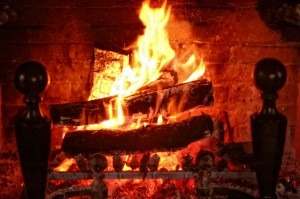What Is It Like To Have A Chimney Fire?
During the fall and winter, we rely on our fireplaces to keep our families warm and to add comfort to our homes. Unfortunately, this high use time is also the most common time for chimney fires to occur. Chimney fires can wreak havoc on your chimney, damage your fireplace system, and can quickly spread to the rest of your home if not contained. Thankfully, there are several ways that homeowners can reduce their risk of accidental chimney fire.
What Happens During a Chimney Fire
Because creosote is so flammable, it will quickly spread throughout the flue. The fire creates a strong draft with a sound often equated to a freight train; loud cracking or popping from the mortar or cement may also be heard. Outside, flames shoot out from the chimney.
While a chimney fire is extremely serious, it is important to stay calm and act quickly. Begin by calling the fire department. Next, attempt to extinguish the fire in the fireplace either with a fire extinguisher or by throwing salt on the flames; this will not put out the fire in the chimney but can help control the high temperatures and lessen the strong drafts. After the chimney fire, it is important to call a certified chimney sweep to evaluate the condition of the chimney before attempting to use the fireplace again.
Preventing Chimney Fire
The best way to prevent future chimney fires is through regular annual chimney sweeping and inspections. Annual chimney sweepings protect your flue against excessive creosote buildup; accidental ignition of this flammable substance is the leading cause of chimney fire.
Because creosote is a naturally occurring byproduct of combustion, it is impossible to prevent it from forming entirely. However, there are several ways that homeowners can prevent excessive creosote buildup.
– Only use seasoned firewood. Seasoned firewood is wood that has been chopped, cut into logs, stacked, and allowed to dry in the elements. This seasoning process removes the majority of the moisture from the wood; wood with high moisture content such as green or freshly cut wood will produce more creosote than seasoned wood.
– Do not burn at low temperatures. Low burning fires smolder for long periods of time, and their low temperaturesr create more creosote. Letting the fires burn naturally hot and allowing them to quickly extinguish can minimize creosote creation.
A chimney fire can be a scary experience; however, it should not stop you from using your fireplace again. If you think you have had a chimney fire, contact the experts at Jack Pixley Sweeps today. Our highly trained staff can evaluate the damage caused by a chimney fire and make recommendations to repair any damage the fire may have caused.

